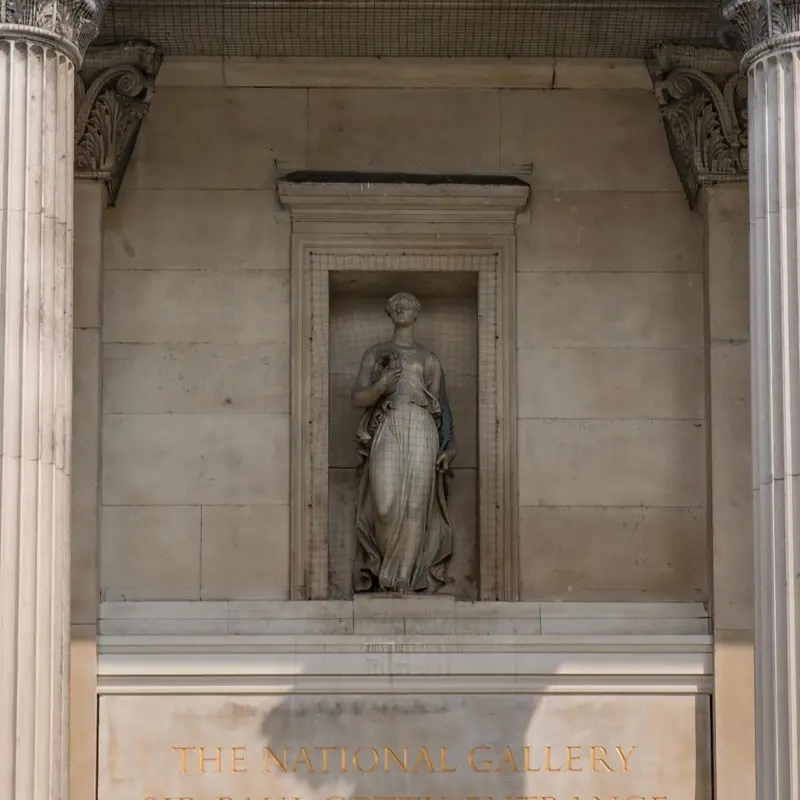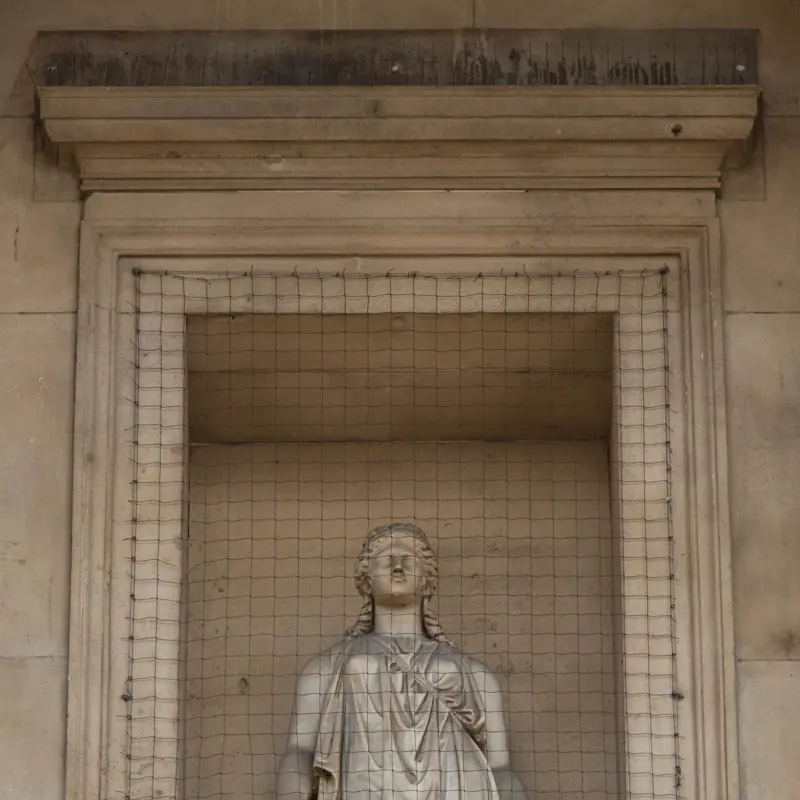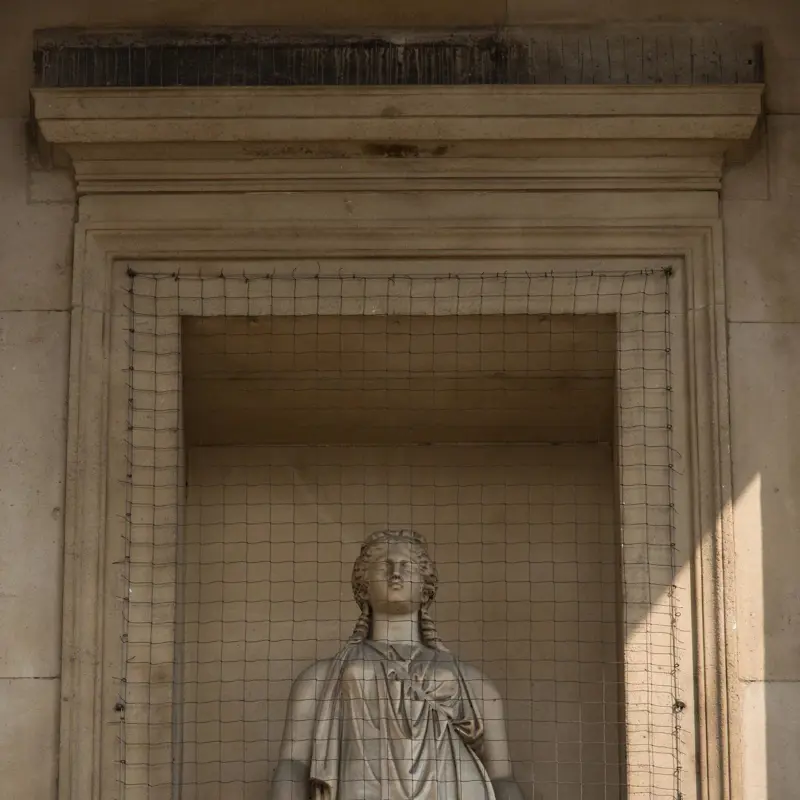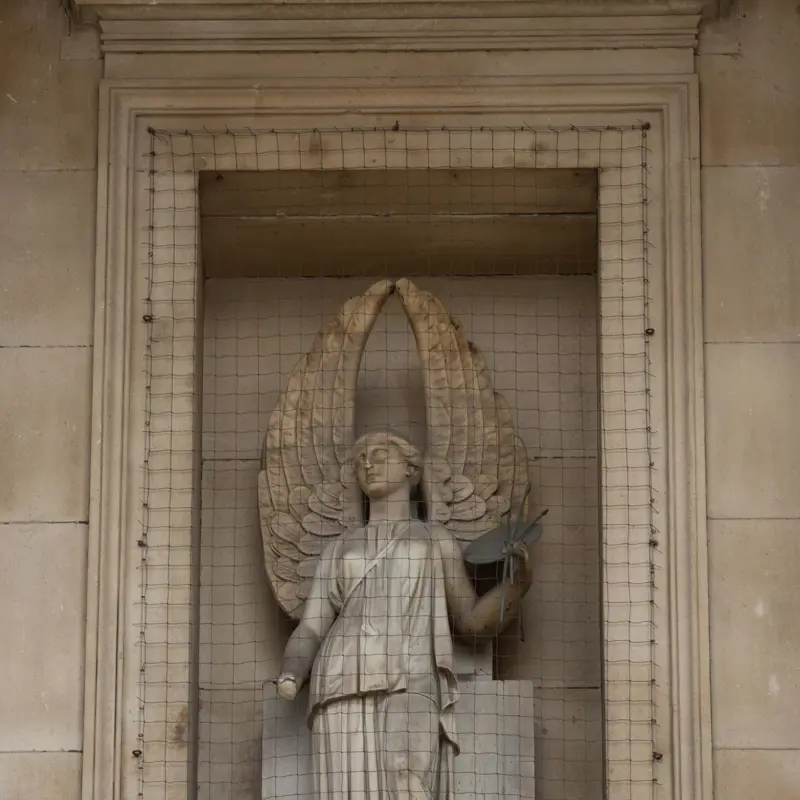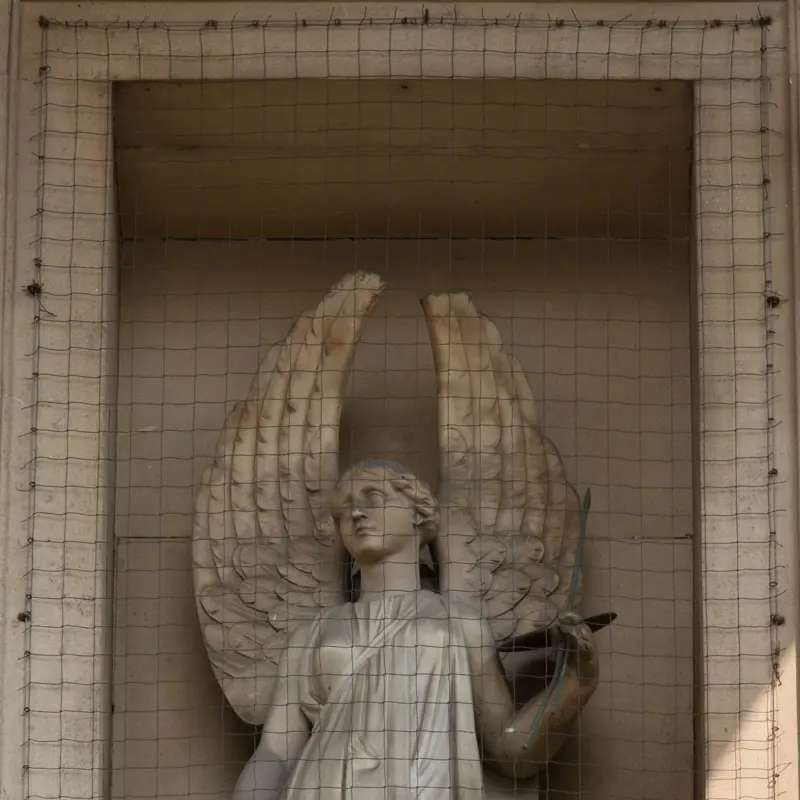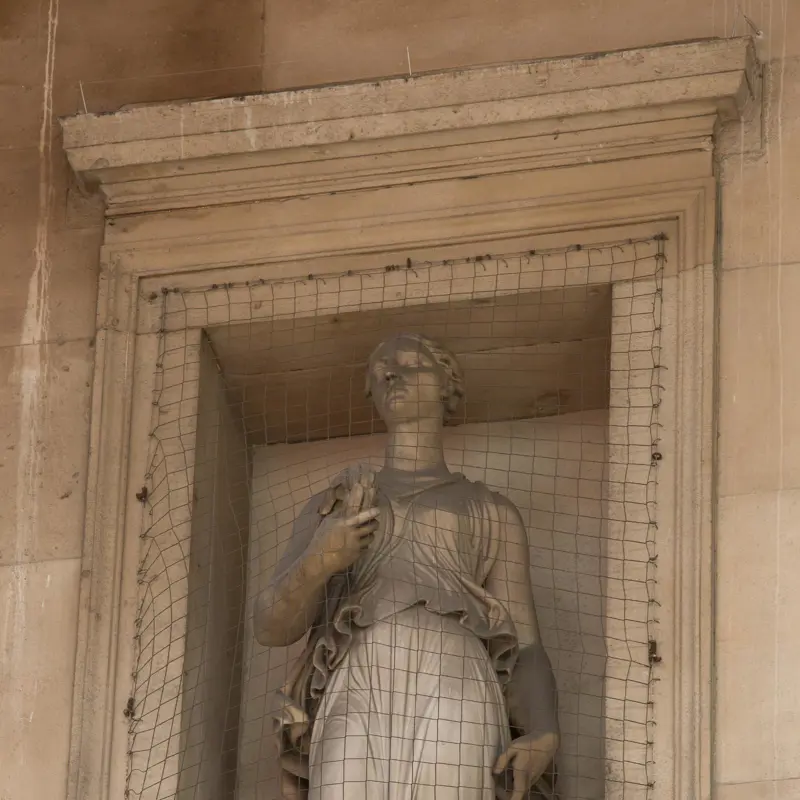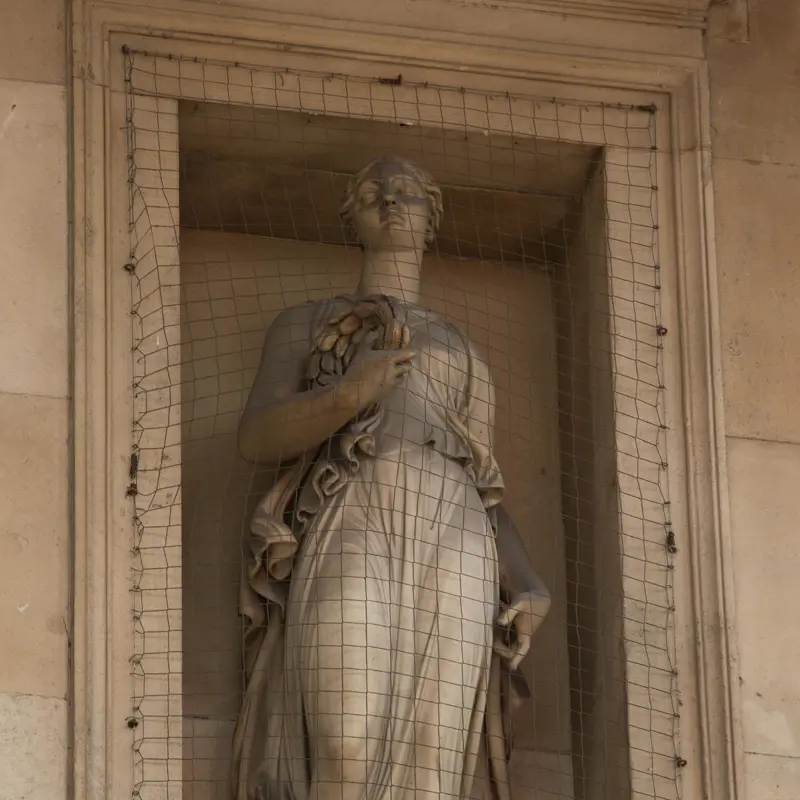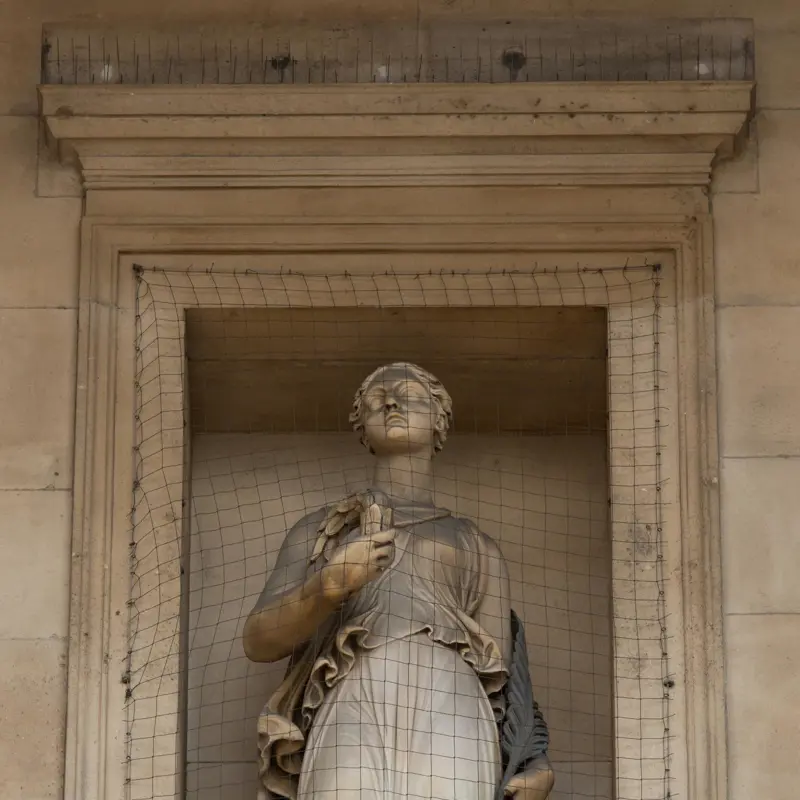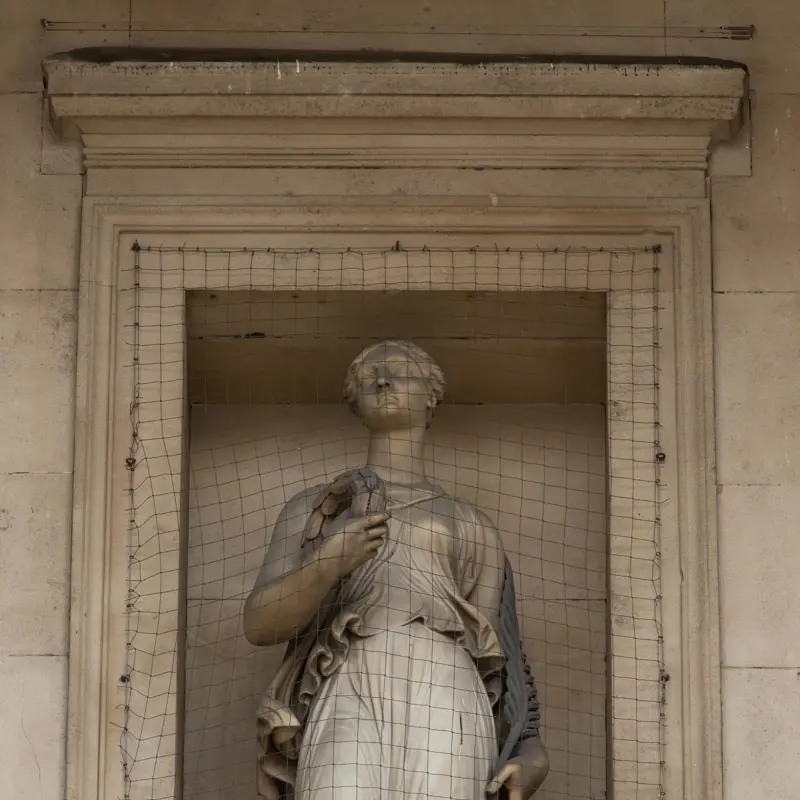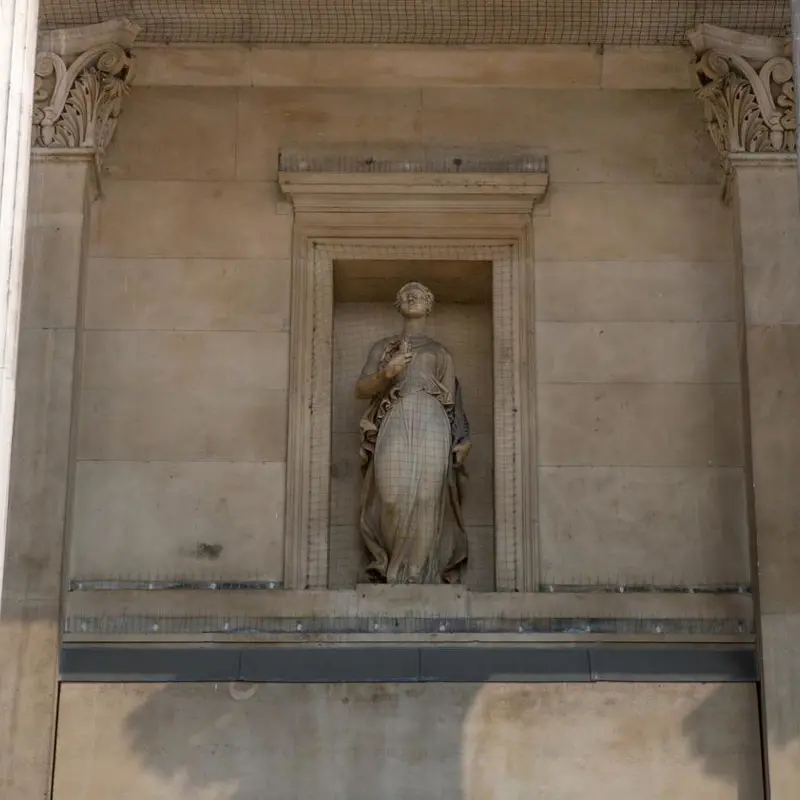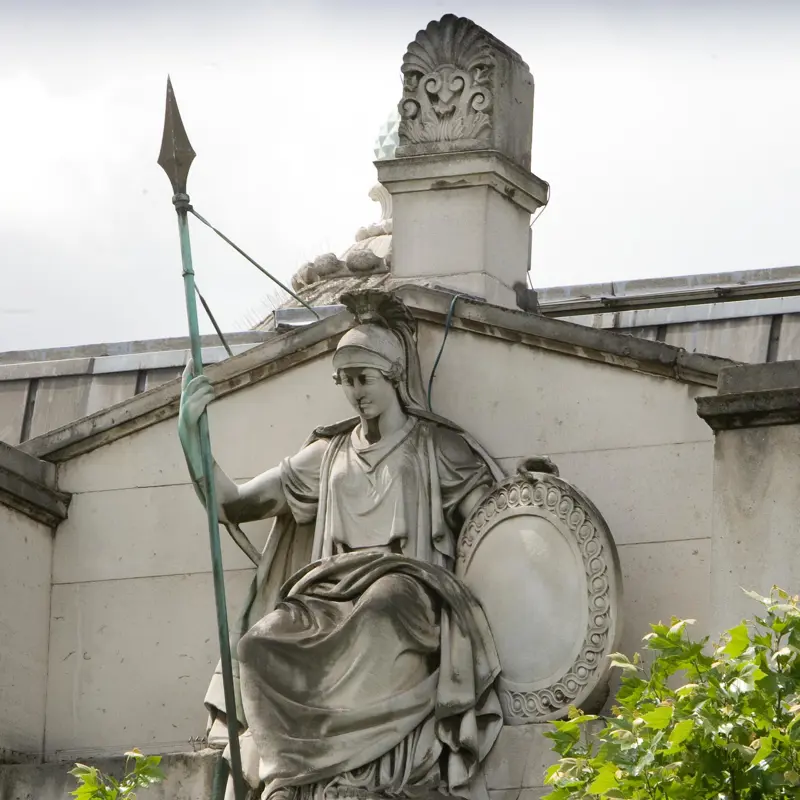Edward Hodges Baily
1788 - 1867
Works by Edward Hodges Baily
(Showing 6 of 12 works)
John Charles Felix Rossi and probably by Edward Hodges Baily
The dominant sculptural ornament of the National Gallery’s central portico is a relief over its entrance, representing Europe and Asia. The continents are personified by two women, one of whom sits on a horse, the other on a camel. They are flanked by a pair of winged female draped figures, stand...
Probably by Edward Hodges Baily
The National Gallery’s Getty Entrance is surmounted with a figure of Victory, framed by another full-length, draped female figure in each of the niches to left and right. This pair of flanking winged figures carry attributes to identify who they are: both clasping a palette and paintbrushes, they...
Probably by Edward Hodges Baily
This female figure, along with its pair, accompanies a figure of Victory on the façade above the National Gallery’s West Entrance. They, and five related sculptures depicting female figures, are the work of the British neoclassical sculptor Edward Hodges Baily. This pair of women do not carry any...
Probably by Edward Hodges Baily
This female figure, along with its pair, accompanies a figure of Victory on the façade above the National Gallery’s West Entrance. They, and five related sculptures of female figures, are the work of the British neoclassical sculptor, Edward Hodges Baily. This pair of women do not carry any attri...
Probably by Edward Hodges Baily
This winged Victory, along with its pair, accompanies another figure of Victory on the façade above the National Gallery’s Getty Entrance. They, and five similar figures, are the work of the British neoclassical sculptor, Edward Hodges Baily. Both the winged figures clasp a palette and paintbrush...
Probably by Edward Hodges Baily
This winged Victory, along with its pair, accompanies another figure of Victory on the façade above the National Gallery’s Getty Entrance. They, and five similar figures, are the work of the British neoclassical sculptor, Edward Hodges Baily. Both the winged figures clasp a palette and paintbrush...
Probably by Edward Hodges Baily
This Victory is the work of the British neoclassical sculptor, Edward Hodges Baily, as are its pair and another six female figures, which all adorn the façade of the National Gallery.In 1826, Baily received a large order for sculpture, including four statues of ‘Victories’, for Marble Arch, which...
Probably by Edward Hodges Baily
This Victory is the work of the British neoclassical sculptor, Edward Hodges Baily, as are its pair and another six female figures, which all adorn the façade of the National Gallery.In 1826, Baily received a large order for sculpture, including four statues of ‘Victories’, for Marble Arch, which...
Probably by Edward Hodges Baily
This Victory, along with the female figures to its left and right, is the work of the British neoclassical sculptor, Edward Hodges Baily. Together with another five similar figures, they adorn the façade of the National Gallery.In 1826, Baily received a large order for sculpture, including four s...
Probably by Edward Hodges Baily
This Victory, along with the winged Victories to its left and right, is the work of the British neoclassical sculptor, Edward Hodges Baily. Together with another five female figures, they adorn the façade of the National Gallery.In 1826, Baily received a large order for sculpture, including four...
Probably by Edward Hodges Baily
The National Gallery’s West Entrance is surmounted with a figure of Victory, framed by another full-length, draped female figure in each of the niches to left and right. As this pair of flanking figures do not carry any attributes, it is hard to identify who they represent. All three statues are...
John Flaxman, finished and later altered by Edward Hodges Baily
At the eastern end of the Gallery, overlooking the church of St Martin-in-the-Fields, is a statue of Minerva, the goddess of wisdom.It was originally designed by the British neoclassical sculptor, John Flaxman, as a seated figure of Britannia, brandishing a spear and shield, to appear on Marble A...
You've viewed 6 of 12 works


